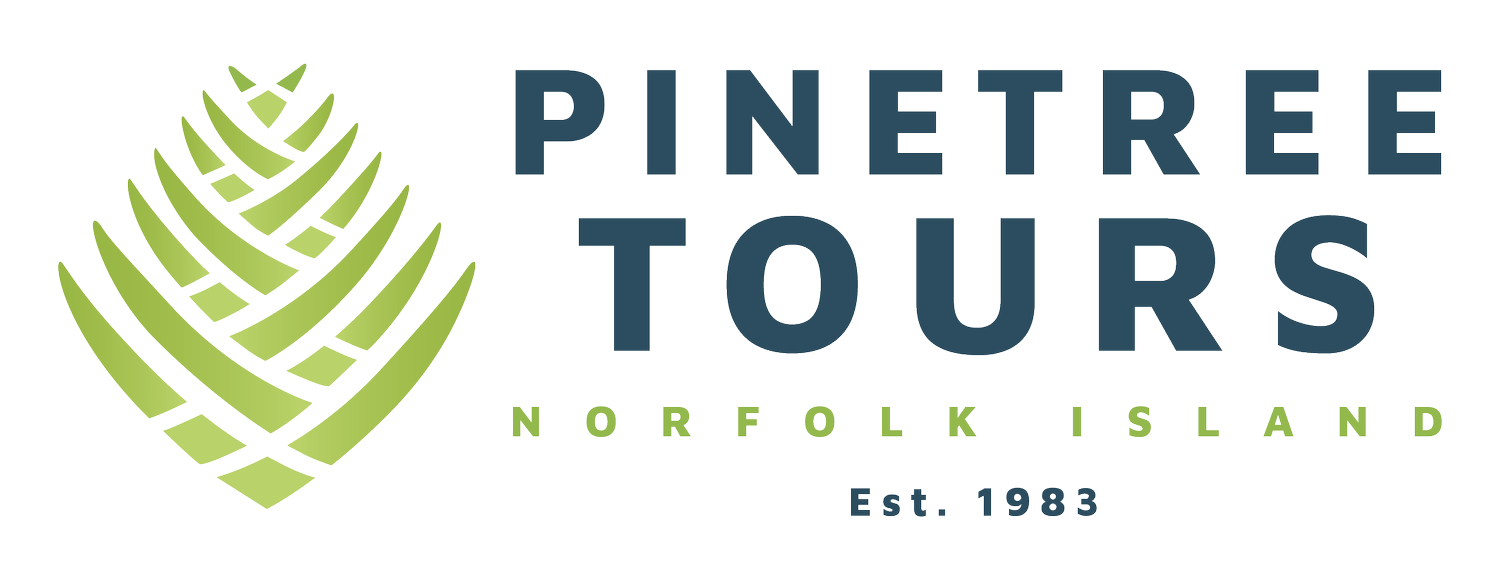Islands Close to Home - Our Norfolk Island Neighbours
Here at Pinetree Tours, we like to share our knowledge of this place we call home.
While many people think Norfolk Island is out here all on our lonesome, if you zoom in closer on the map - you’ll see our neighbours, Nepean Island and Phillip Island.
Both Islands are part of the Australian External Territory of Norfolk Island - and are included in Norfolk Island National Park. So we thought they deserved some attention!
Here are some interesting facts about our Norfolk Island neighbours.
Nepean Island
Nepean Island, known in Norfolk Language as Nepeyan Ailen) is located around 800m south of Norfolk Island.
The small island of around 25 acres is uninhabited due to its small size and tall cliffs, making access to the island nearly impossible for small boats.
Unlike Norfolk and nearby Phillip Island, Nepean Island is not volcanic - but is Late Pleistocene limestone formed from wind blown sand dunes.
The island was cleared during the first settlement and was used as a quarry for timber during the Second Convict Settlement. Remaining stone steps can still be seen on the east coast from this use.
It is thought that the Island was named in 1788 by Lieutenant Philip Gidley King after Evan Nepean, who was the first Under-Secretary of State for the Home Department. He was involved with arrangements for dispatching the First Fleet and was involved in administration for the Colony of New South Wales during its early years.
Before being cleared in the 1790’s, the island was home to about 200 Norfolk Island Pines.
Today, it is the breeding site for several species of seabirds, including the masked booby, little shearwaters, Sooty Terns (Whale Birds), Grey Noddy’s, Wedge-tailed Shearwaters, Brown Noddy’s and the Red-Tailed tropicbird.
It is also home to the Marbled Gecko (now extinct on Norfolk Island), the Phillip Island Skink, little nipper land crabs, freshwater crabs and green turtles. native plants on the Island include pigface, native spinach, moo-oo, mative flax and native rush.
Interestingly, the Sooty Tern is also known as The Whale Bird. Given this name as it follows the whales to Norfolk Island. The eggs of the Sooty Tern are harvested by Islanders, a tradition that dates back many years, and is legally sanctioned and regulated, with the yearly collecting season ending on 30th November.
This comes under the Birds Protection Act 1913. In 1908 the number of eggs harvested from Nepean Island was between 10,000 and 15,000 several times a week! The eggs are White in colour with black specks and are orange inside.
They are said to taste very fishy, and are often enjoyed boiled or in an omelette.
Phillip Island
Phillip Island is located 6km South of Norfolk Island.
The Island was also named by Philip Gidley King after Arthur Phillip, the first Governor of New South Wales. Measuring 2.1km from West to East and 1.95km from North to South, the uninhabited Islands highest point Jacky Jacky is 280m above Sea Level.
The Island is of Volcanic origin and some people say it is shaped like a hairdryer with the nozzle pointing east!
Due to the introduction of pest animals such as pigs, goats and rabbits during the Norfolk Island penal colony era, the vegetation of the Island was devastated and caused lots of erosion. This gives the island a reddish-brown colour as you see it from Norfolk Island.
The pigs and goats were removed by the early 20th century and the rabbits were exterminated by 1988. Over the years since, the Island has naturally regenerated itself with native species and weeds and with remediation work by National Parks Staff.
There are around 80 species of plants found on Phillip Island, 3 of which are endemic. Achyranthes Margaretarum, Abutilon Julianae and the Hibiscus Insularis.
Phillip Island is also an important breeding ground for 12 species of Seabirds including the Providence Petrel, Kermadec Petrel, White-necked Petrel, Black-Winged Petrel, Wedged-tailed shearwater, Australasian Gannat, Sooty Tern (Whale Bird), Red-tailed tropicbird and grey noody.
So much to see
If you’re up for a bit of an adventure, local providers run trekking tours to Phillip Island.
After your boat ride across the ocean, you’ll embark on a bit of a climb with the use of a series of ropes and ladders, to get up the steep hills to reach the cliff tops.
While this may not sound like everyone’s cup of tea, the views are worth it!



